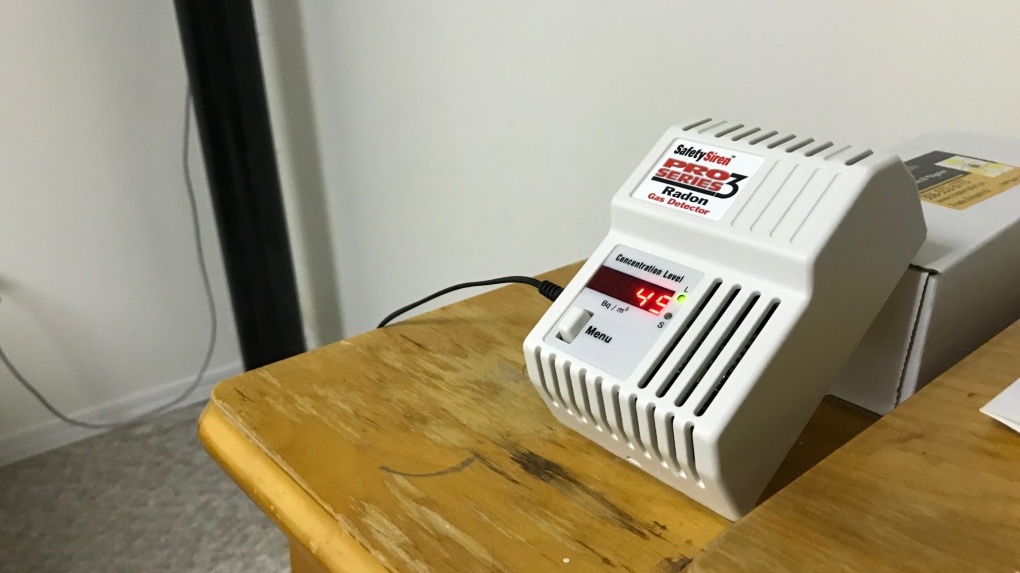More than 10 million Canadians living in homes with ‘high radon,’ report says
A new report suggests that Canadians’ exposure to a radioactive gas is increasing, putting millions of people at a higher risk of developing lung cancer.
The data from the University of Calgary’s 2024 Cross-Canada Survey of Radon Exposure shows 18 per cent of Canadian homes contain high levels of radon gas that exceeds Health Canada’s acceptable standards.
This means that approximately 10.3 million Canadians are exposed to the dangerous gas inside their own homes.
“In the 12 years since we released the first Cross Canada Radon Report, evidence has continued to emerge showing that the number of high-radon homes has been increasing,” said Dr. Pawel Mekarski, with Health Canada’s national radon program, in a statement.
“The 2024 survey represents a more up-to-date snapshot of radon levels across the country, highlighting the importance of protecting Canadians from residential radon exposure.
What is radon?
Radon is a colourless, odourless and radioactive gas and the second-largest contributor to lung cancer worldwide.
It’s produced when uranium, a common element in Canadian soil and rock, breaks down.
It can enter homes through any opening that’s in contact with the ground, such as cracks in the foundation floor and walls, construction joints, gaps around service pipes, support posts, window casements, floor drains, sumps or cavities inside walls, Health Canada says.
Levels of radon inside homes can vary depending on the local geology, when the building was constructed and other factors such as ventilation.
The report said no area of Canada is free of radon exposure and residents are urged to test their homes.
“Prolonged radon gas exposure is the leading cause of lung cancer among people who have had a limited tobacco smoking history or have never smoked, with the lifetime lung cancer risk increasing by 16 per cent for exposure to every 100 Bq/m³ of radon,” the school said.
Testing and mitigating radon
An oncologist with the U of C says radon can only be detected with a specialized radon detector and once those high levels have been identified, measures can be taken to remove it.
“The key is radon reduction strategies,” said Dr. Doreen Ezeife. “Speak to a radon mitigation company and they can come to your home and install a unit in the basement that’ll pump the radon out using a fan.”
Ezeife says its only been about 10 years since scientists have learned about radon levels in Canadian homes and their impact on public health.
She said Albertans are at a disadvantage when it comes to health problems from radon.
“Unfortunately, we don’t have great screening strategies for lung cancer established in Alberta,” she said.
“Many patients may develop a tumor in the lungs after prolonged exposure to radon and the tumor can grow without developing symptoms and by the time its discovered its unfortunately at an advanced stage.”
Ezeife says homeowners can acquire a testing kit online, which will collect data over three months.
“The test kit is sent back to the company and they’ll let you know what the radon levels are in your home.
“Our most recent finding show one in five Alberta homes have high radon levels.”

Sounding the alarm
Dr. Aaron Goodarzi, one of the members of the U of C’s research team, said the updated report provides “a greater understanding” of how Canadians are being exposed to radon.
“Alarmingly, this report concludes that Canadians are among the most highly radon-exposed people on Earth, and that means we urgently need to address this to avoid a future of prevalent but otherwise avoidable lung cancers.”
Goodarzi said while Canada has one of the lowest rates of smoking in the world but one of the highest rates of lung cancer.
The full findings of the report can be found online.
(With files from Jacqueline Wilson)
View original article here Source









